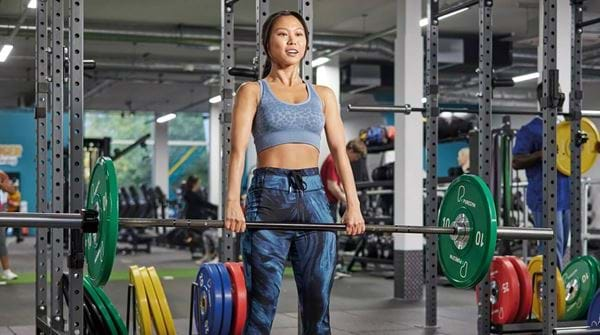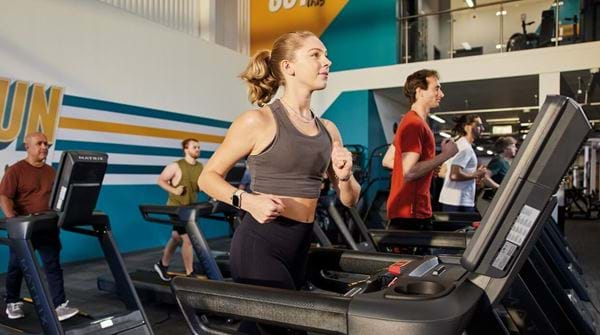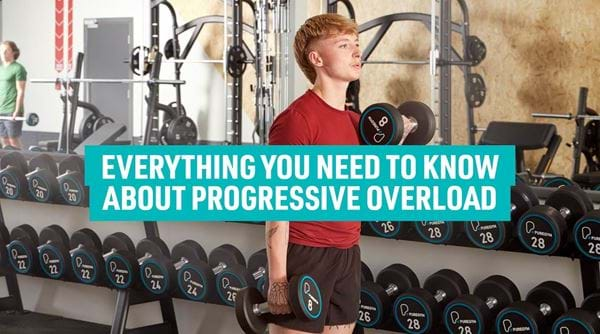Intermediate Calisthenics Workout Plan

What Is Calisthenics | Advantages Of Calisthenics | Disadvantages Of Calisthenics | What Is Intermediate Level | Calisthenics Intermediate Workout Plan
Looking to take your bodyweight workouts to the next level? PureGym Leeds based Personal Trainer Danny Doi shares a intermediate calisthenics workout below, with progressions and regressions to try. Jump straight to the workout here, or read on to learn more about what calisthenics for intermediate levels looks like.
What Is Calisthenics?
Calisthenics is a type of strength training that uses your bodyweight to create resistance. Calisthenics workouts can be carried out with no equipment, but typically will use some basic kit like paralettes or pull up bars to allow different exercises to be performed.
Calisthenics is most known for advanced, complex full body movements like muscle ups, but there are options for every level. Rather than adding weights to make an exercise more challenging, harder variations of an exercise are worked on. For example, progression of a squat could look like:
-
Bodyweight squat
-
Bodyweight split squat
-
Bodyweight Bulgarian split squat
-
Shrimp squat
-
Pistol squat
Resistance bands can be used to make exercises easier or harder too.
Read on to discover everything you need to know about intermediate level calisthenics, and get a free calisthenics workout with progressions and regressions to try.
Benefits Of Training Calisthenics
Any form of resistance training has benefits, including an increase in strength, muscle mass, bone density, and improved mental health.
Compared to more conventional forms of strength training like weightlifting, calisthenics places more focus on full body movements that work a large range of motion. This has some unique benefits including:
-
Increased mobility and flexibility. Calisthenics places more emphasis on training through a full range of motion than other types of strength training, for example squatting full depth rather than thighs parallel with the floor. This is a great way to improve your overall mobility and flexibility, improving your quality of life in everyday movements and reducing risk of injury.
-
Workout variety. While you can perform the same bodyweight exercises each time, a benefit of calisthenics is that there are dozens of beginners and intermediate calisthenics exercises to choose from. If you find strength training workouts boring, having the ability to choose different exercises for each workout and still make progress can help you to stay motivated each week.
-
Improved core strength, stability, and coordination. Calisthenics exercises involve using multiple muscle groups at once, often through challenging movements that require a lot of stability. These kind of exercises are great for improving coordination, balance, core strength, and overall stability.
-
Works the cardiovascular system. Many calisthenics exercises work multiple muscle groups at once, which increases the demand on the cardiovascular system. Some studies have shown that calisthenics workouts can be classed as a HIIT workout, benefitting your cardio system and burning calories.
Disadvantages Of Training Calisthenics
While there are many advantages to training calisthenics, there are some challenges too.
-
Harder to progress. Compared to weight training, it can be harder to progress with calisthenics. While weightlifting can be made more challenging by adding on as little as 1kg, there's often big strength differences between different calisthenic exercise progressions and it can take a long time to achieve more complex and challenging exercises.
-
Less effective at building muscle mass. Calisthenics is great for building full body strength and mobility, but if your goal is to build noticeable muscle mass, lifting weights is more effective.
How To Know If You're Intermediate Level For Calisthenics
There is no set requirements for what is considered to be intermediate level for calisthenics, but most people consider someone to be intermediate when they have mastered, or are close to mastering, bodyweight basics like pull ups, push ups, L sits, and pistol squats, and are beginning to work towards more advanced exercises like front and back levers, flags, and handstand push ups.
If you don't feel ready for a calisthenics workout intermediate level, check out our calisthenics for beginners blog here.
It is not unusual for people to be at different skill levels for different muscle groups due to strength or flexibility limitations. In Danny's calisthenics intermediate routine below, he's included regressions for each exercise so it is accessible for all levels.
Intermediate Calisthenics Routine
This is a calisthenics workout plan for intermediate level that will help you to build the strength needed to progress to more advanced calisthenics exercises.
In the video, there are regressions for each exercise which will help you to work up to the intermediate calisthenics exercises if you are not quite ready to do them.
There are a few ways to do this calisthenics workout plan:
-
Circuit based: Choose 4-5 exercises and perform each exercise for a set number of reps or amount of time in a circuit format, taking a short rest between each exercise set and a slightly longer rest between each full round
-
Traditional strength training reps and sets: Choose 5-6 exercises and perform 3-4 sets of each exercise before moving onto the next exercise
-
Combine with strength workouts: If you enjoy other forms of strength training such as weightlifting, you can choose to incorporate a few of these calisthenics exercises into your normal workouts to enjoy the benefits of both
Whichever option you choose, make sure to start with a full body warm up and finish with some cooldown stretches.
-
Pull ups
Pull ups work the lats, rhomboids, rear delts, biceps and forearms, as well as the core muscles. This is a great exercise for strengthening the muscles in the back, and it forms the basis of many advanced calisthenics exercises. If you're unable to perform multiple pull ups, assisted pull ups and negative pull ups are good regressions. We cover this more in our blog on how to get your first pull up here.
-
Bar pullovers
The bar pullover has gained popularity recently but has been around for years in gymnastics. This exercise works the back, shoulders, arms, core, hip flexors, and quads.
-
Toes to bar
Toes to bar works the upper body, core, and hip flexors, and can improve hamstring flexibility. To regress this exercise, start with your knees bent and work on pulling the knees to chest. You can then work on a straight leg version aiming to get your legs as high as possible, until you have the strength and flexibility to get the toes to the bar.
-
Tricep dips
Tricep dips are a great alternative or addition to push ups for strengthening the chest, triceps, and shoulders. Negative dips and band assisted dips can help build the strength needed to perform unassisted dips.
-
Pistol squats
Working the quads, hip flexors, glutes, hamstrings, and calves, pistol squats are a one legged squat variation that requires good coordination, balance, lower body mobility, and leg strength. Regressions for this exercise include box assisted pistol squats and TRX or ring pistol squats.
-
L sits
L sits work the shoulders, chest, triceps, core, quads and hip flexors, and are more challenging than they look. Regressions include L tucks, or alternating single leg L sits.
-
Handstands
Handstands are an impressive exercise to master, with benefits including core strength, balance and coordination, and shoulder and wrist strength. Holding a free standing handstand can take a long time, so using the wall is a good way to build strength and control. If wall handstands are too difficult, begin with planks, box planks, and pike holds to build strength.
Ready to try a calisthenics workout? With functional areas in many of our gyms, PureGym is a great place to train calisthenics. Find your nearest gym here to get started.


